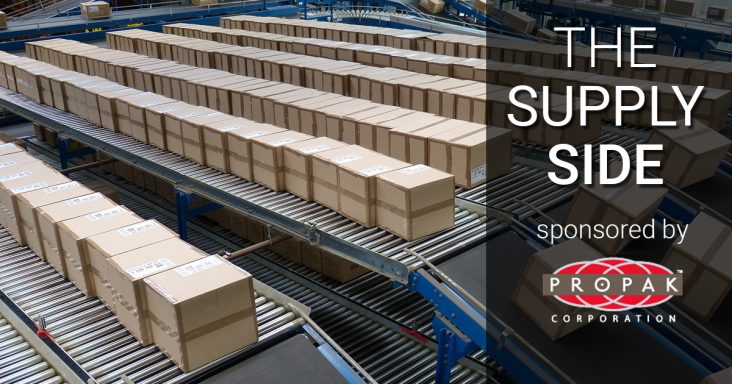The Supply Side: Retailers, economists prognosticate about slowing economy
by April 22, 2023 9:54 am 890 views

Retailers, large and small, are questioning whether this year will be a replay of pre-pandemic norms. The National Retail Federation (NRF) recently issued its annual forecast of U.S. retail sales for 2023, and the call is for growth to moderate in the coming months.
U.S. retail sales are forecast to grow 4%-6% this year, totaling between $5.13 trillion and $5.23 trillion. The forecast excludes motor vehicle, gasoline and restaurant sales. By comparison, retail sales rose 7% last year to $4.9 trillion, better than the 3.6% pre-pandemic average annual growth rate of 3.6%, the trade group said.
NRF said they expect online retail sales to grow between 10% and 12% year-over-year to a range of $1.41 trillion to $1.43 trillion. Physical stores are still consumers’ primary point of purchase, accounting for approximately 70% of total retail sales.
NRF Chief Economist Jack Kleinheinz said the economy has been resilient despite restrictive monetary policy to curb inflation. He said the recent concern in the financial markets and banking sector continues to complicate the outlook.
“While it is still too early to know the full effects of the banking industry turmoil, consumer spending is looking quite good for the first quarter of 2023,” Kleinhenz said. “While we expect consumers to maintain spending, a softer and likely uneven pace is projected for the balance of the year.”
GDP SLIP
Kleinhenz said he expects spending will be tempered and credit harder to get for many consumers as job growth slows in the coming months. He said higher interest rates would likely keep consumer spending down, impacting U.S. gross domestic product. NRF projects full-year GDP growth of around 1%, reflecting a slower economic pace, which is half the 2.1% increase from 2022. The trade group estimated that inflation is on the way down but will remain between 3% and 3.5% for all goods and services for the year.
Although the labor market has remained resilient, NRF anticipates job growth will decelerate in lockstep with slower economic activity and the prospect of restrictive credit conditions. The group said the unemployment rate is likely to exceed 4% before next year.
Kathy Bostjancic, the chief economist at Nationwide Mutual, expects a harder landing for the economy following recent bank failures that will likely dampen lending and credit availability in the coming months. She thinks inflation will remain sticky, which is problematic for lower-income households primarily spending the savings amassed during the pandemic. Her prediction for inflation is a Consumer Price Index (CPI) of around 4% by the fourth quarter and down to 3% by the end of next year.
“Reducing inflation to normal levels is going to be a multi-year process,” she said.
She said slowing job growth would also equate to stagnant wages, and consumer spending is directly related to disposable income.
HARDER LANDING
Gregory Daco, the chief economist at Ernst & Young, agreed that slower growth is imminent. That will mean a more challenging time for many households and businesses that depend on consumer confidence and spending, like retail and restaurants. Daco said retailers had seen lower supply chain expenses this year, but demand has also waned. He expects consumer confidence to worsen if the banking problems widen, especially if pension and mutual funds are under pressure. He expects a hard landing as more than 40% of bankers nationwide have recently tightened lending standards.
“I see the U.S. heading into a typical recession, not a shallow one,” Daco said.
Kroger CEO Rodney McMullen said there’s only one thing he’s sure of in this economy or at any time.
“People are going to keep eating, but how they shop will continue changing,” he said.
Marvin Ellison, CEO of Lowe’s Cos. Inc., said retailers who have brick-and-mortar stores and connect them online can make omnichannel shopping easy. He said retailers that can provide value and service would be profitable, recession or not.
CUSTOMER FOCUS
Pashmina Hilal, a research manager in Google’s retail division, said loyalty is out the window.
“Customers are looking for the best deals. Comparable brands at a value that can fill a need are what they are reaching whether shopping online or in-store,” Hilal said. “Value is here to stay, and physical store presence remains incredibly important, especially when it’s combined with an immersive app experience.”
She said book retailer Barnes & Noble is investing in more storefronts because it understands the importance of app use in and outside the store.
Hilal said shopping behavior had become a mashup of online and in-store, making it more difficult to distinguish the difference. For instance, there was a time when people only shopped for furniture inside store showrooms. Now they can shop for furniture online and see the items placed in their personal space via artificial intelligence features on apps and websites like Wayfair or Home Depot. She said they could see how products are used on social media sites like YouTube, which add more touchpoints to the shopping journey.
Jonathan Silver, CEO and founder of retail consultancy Affinity Solutions, said people like shopping in brick-and-mortar stores, given their social nature. But he said the rise of online shopping amid the pandemic has some stickiness with consumers.
Anuska Salinas, president of the digitally native brand Rent the Runway, said the pandemic was an immense challenge given that the main customers served were those going to events. She said the brand has worked to help fashion-conscious women despite their circumstances. The brand has expanded to offer a maternity line and a back-to-the-office line that resonates well with customers.
Editor’s note: The Supply Side section of Talk Business & Politics focuses on the companies, organizations, issues and individuals engaged in providing products and services to retailers. The Supply Side is managed by Talk Business & Politics and sponsored by Propak Logistics.
